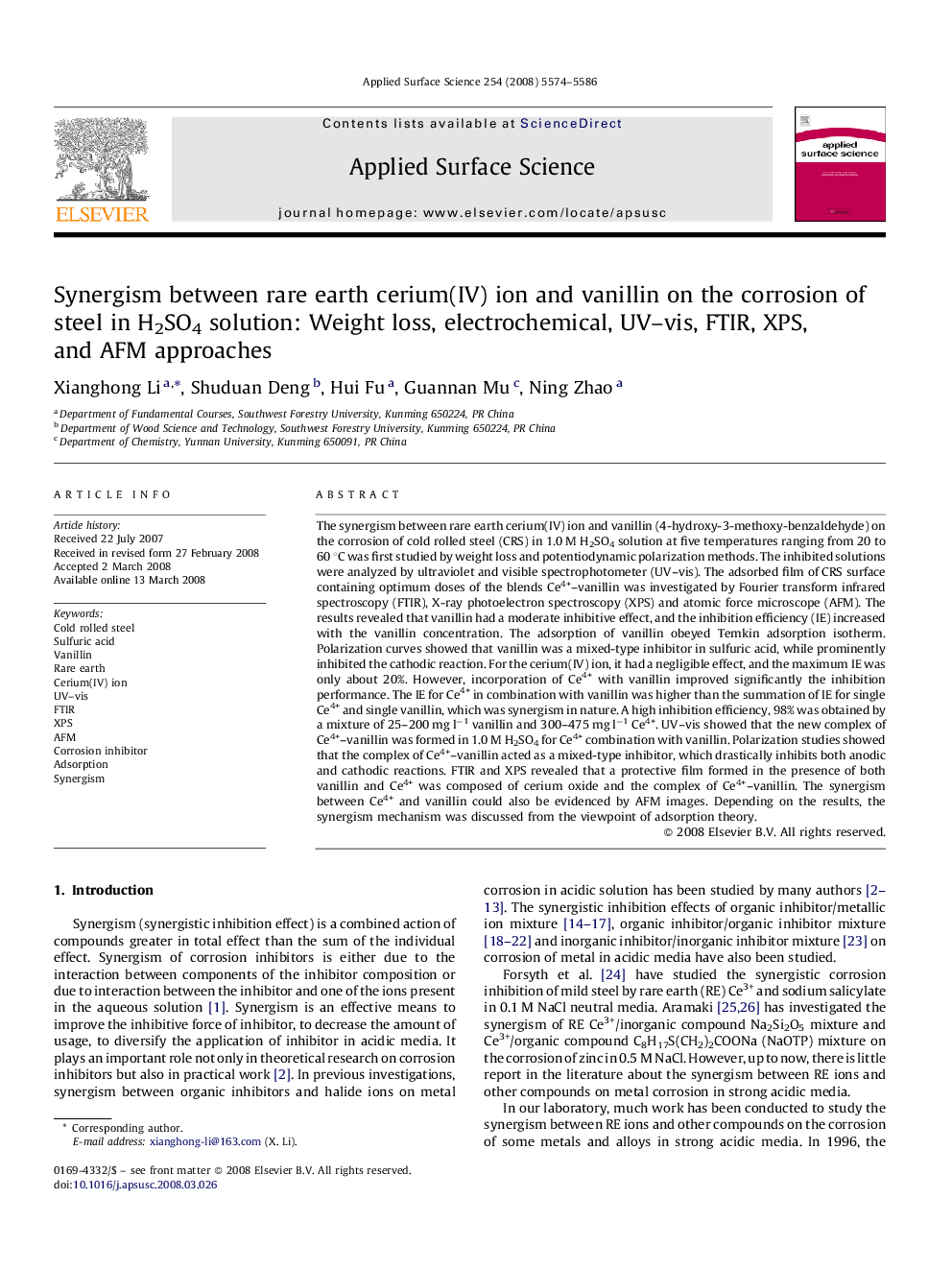| Article ID | Journal | Published Year | Pages | File Type |
|---|---|---|---|---|
| 5369465 | Applied Surface Science | 2008 | 13 Pages |
Abstract
The synergism between rare earth cerium(IV) ion and vanillin (4-hydroxy-3-methoxy-benzaldehyde) on the corrosion of cold rolled steel (CRS) in 1.0 M H2SO4 solution at five temperatures ranging from 20 to 60 °C was first studied by weight loss and potentiodynamic polarization methods. The inhibited solutions were analyzed by ultraviolet and visible spectrophotometer (UV-vis). The adsorbed film of CRS surface containing optimum doses of the blends Ce4+-vanillin was investigated by Fourier transform infrared spectroscopy (FTIR), X-ray photoelectron spectroscopy (XPS) and atomic force microscope (AFM). The results revealed that vanillin had a moderate inhibitive effect, and the inhibition efficiency (IE) increased with the vanillin concentration. The adsorption of vanillin obeyed Temkin adsorption isotherm. Polarization curves showed that vanillin was a mixed-type inhibitor in sulfuric acid, while prominently inhibited the cathodic reaction. For the cerium(IV) ion, it had a negligible effect, and the maximum IE was only about 20%. However, incorporation of Ce4+ with vanillin improved significantly the inhibition performance. The IE for Ce4+ in combination with vanillin was higher than the summation of IE for single Ce4+ and single vanillin, which was synergism in nature. A high inhibition efficiency, 98% was obtained by a mixture of 25-200 mg lâ1 vanillin and 300-475 mg lâ1 Ce4+. UV-vis showed that the new complex of Ce4+-vanillin was formed in 1.0 M H2SO4 for Ce4+ combination with vanillin. Polarization studies showed that the complex of Ce4+-vanillin acted as a mixed-type inhibitor, which drastically inhibits both anodic and cathodic reactions. FTIR and XPS revealed that a protective film formed in the presence of both vanillin and Ce4+ was composed of cerium oxide and the complex of Ce4+-vanillin. The synergism between Ce4+ and vanillin could also be evidenced by AFM images. Depending on the results, the synergism mechanism was discussed from the viewpoint of adsorption theory.
Keywords
Related Topics
Physical Sciences and Engineering
Chemistry
Physical and Theoretical Chemistry
Authors
Xianghong Li, Shuduan Deng, Hui Fu, Guannan Mu, Ning Zhao,
